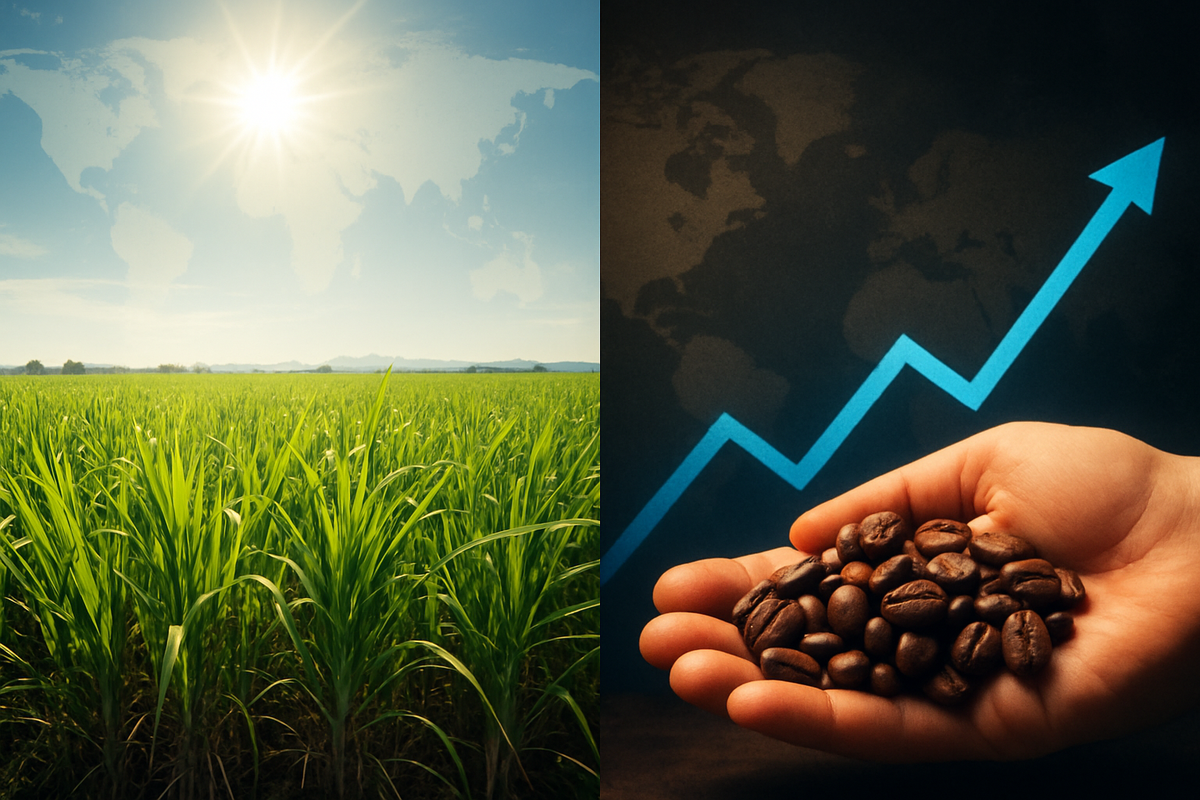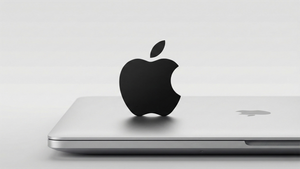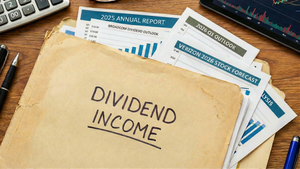
October 28, 2025 – The global commodity markets are currently presenting a starkly divergent picture for two of the world's most consumed agricultural staples: sugar and coffee. While sugar prices have experienced a significant downturn, driven by robust global supplies and evolving demand patterns, coffee prices have defied earlier expectations of easing, instead surging to multi-year highs. This split trajectory carries profound implications, creating distinct sets of winners and losers across agricultural sectors and consumer industries worldwide.
This contrasting market recalibration underscores a complex interplay of factors: unparalleled sugar production, particularly from Brazil, has created a glut, whereas coffee markets are grappling with persistent supply shortages exacerbated by climate events, logistics disruptions, and trade policies. Stakeholders across both value chains are now compelled to re-evaluate their strategies in an environment characterized by abundance in one commodity and scarcity in another.
A Deluge of Sugar and a Dearth of Coffee: Unpacking the Price Divide
The current price dynamics for sugar and coffee are a result of distinct, powerful forces. For sugar, the narrative is largely dominated by an optimistic outlook for global production, particularly from the agricultural powerhouse of Brazil. The country's Center-South region, the heart of its sugarcane industry, is projected to deliver a record 44 million metric tons (MMT) of sugar for the 2026/27 season, according to consultancy Datagro. This phenomenal output is partly driven by an economic calculus: the booming corn ethanol production has made corn a more cost-effective biofuel alternative, prompting Brazilian sugarcane mills to divert a larger portion of their sugarcane crop towards sugar production rather than ethanol. This strategic pivot significantly bolsters global sugar supplies, leading to prices plummeting to their lowest levels in over four years.
Beyond Brazil, other major producers are also contributing to the glut. India, following an 8% above-normal monsoon rainfall—its strongest in five years—is anticipating a bumper sugar crop, with projections for the 2025/26 season reaching 34.9 MMT. Similarly, Thailand's sugar crop is expected to increase by 5% year-on-year to 10.5 MMT. These collective efforts have led to widespread forecasts of a global sugar surplus for the 2025/26 season, ranging from a modest 4.1 MMT to a substantial 10.5 MMT. Simultaneously, subtle but significant demand shifts are at play; the rising popularity of weight-loss medications and a broader consumer trend towards low-sugar diets, particularly in regions like the European Union, are exerting additional downward pressure on consumption forecasts.
In stark contrast, the coffee market has seen prices surge to near-record levels, with Arabica futures climbing by almost 40% since August 2025. This escalation, defying earlier hopes of easing, is attributed to a complex interplay of persistent supply challenges. Global logistics disruptions, initially from the COVID-19 pandemic and now exacerbated by regional conflicts impacting shipping routes, continue to impede bean movement. Rising fertilizer costs, driven by geopolitical events, have significantly increased production expenses for farmers. Furthermore, extreme weather conditions, including droughts and floods in major producing countries like Brazil and Vietnam, have severely impacted yields. Trade policies, such as the imposition of a 50% tariff on Brazilian coffee imports by the U.S. starting August 2025, have also further increased supply costs for some markets, tightening available supplies and fueling the price rally.
Initial market reactions reflect a prevailing bearish sentiment for sugar, with futures contracts in both New York and London hitting their lowest levels in over four years. For coffee, the sustained rally has put immense pressure on roasters and retailers, who are grappling with significantly higher input costs. Producers in both sectors face distinct challenges: sugar producers must navigate an oversupplied market, often compelled to maximize output despite low prices, while coffee producers, despite higher prices, are struggling with lower yields and inflated operational costs, meaning the higher price doesn't necessarily translate to higher profits for them.
Companies Navigating the Divergent Commodity Tides
The contrasting trajectories of sugar and coffee prices are creating a distinct landscape of winners and losers among public companies spanning the food and beverage industry, from agricultural producers to consumer goods giants. Companies heavily reliant on sugar as a primary input are poised to reap significant benefits from its declining costs, while those in the coffee sector face considerable headwinds due to soaring bean prices.
Beneficiaries of the Sugar Slump:
Food and beverage manufacturers, which extensively use sugar in their products, are the clearest winners from the current price downturn. Companies like The Coca-Cola Company (NYSE: KO), a global beverage giant, will see reduced production costs for its sweetened beverages, potentially boosting gross margins. Similarly, Nestlé S.A. (OTC: NSRGY), with its vast portfolio of sugary confectionery (e.g., Kit Kat, Smarties) and sweet products, stands to gain from lower input costs, although its substantial coffee business presents a mixed impact. Other major consumers of sugar, such as Mondelez International (NASDAQ: MDLZ) (known for Oreo and Cadbury), The Hershey Company (NYSE: HSY), and Tootsie Roll Industries (NYSE: TR), are expected to see direct improvements in their cost of goods sold, leading to enhanced profitability and potentially positive investor sentiment. These companies may also find greater flexibility to invest in marketing or pass some savings to consumers, thereby gaining market share.
Challengers in the Coffee Market:
Conversely, companies heavily invested in coffee are facing significant challenges due to persistently high and rising bean prices. Starbucks Corporation (NASDAQ: SBUX), the world's largest coffeehouse chain, is a massive buyer of green coffee beans. The surge in prices directly increases its cost of goods sold, squeezing profit margins and potentially pressing the company to raise menu prices, which could impact demand. Similarly, J.M. Smucker Company (NYSE: SJM), which owns major coffee brands like Folgers and Dunkin' (for at-home products), will incur higher costs for its substantial coffee portfolio, affecting its food and beverage segment's profitability. Keurig Dr Pepper (NASDAQ: KDP), a major player in the single-serve coffee market with brands like Green Mountain Coffee Roasters, will also experience increased sourcing costs for its K-Cup pods and other coffee products. Diversified companies like Nestlé and Coca-Cola, despite benefiting from lower sugar costs, will see their coffee divisions, such as Nescafé and Costa Coffee, respectively, face significant headwinds from these record-high green-bean prices. These companies must strategically decide whether to absorb costs, raise prices, or risk impacting consumer perception through "shrinkflation."
The Plight of Producers:
On the production side, sugar producers are grappling with a revenue squeeze. Brazilian sugar-cane processors like Raízen S.A. (NYSE: RAIZ), São Martinho S.A. (B3: SMTO3), and Jalles Machado S.A. (B3: JALL3) are heavily impacted. With corn ethanol offering cheaper alternatives, these companies are diverting more cane to sugar, exacerbating the surplus and driving down prices, directly hitting their top-line revenue and profitability. Their shares have already experienced significant declines. Similarly, Adecoagro S.A. (NYSE: AGRO) and Cosan S.A. (NYSE: CSAN), with substantial sugar and ethanol interests, face negative impacts. European giant Südzucker AG (ETR: SZU) and Indian sugar companies like Balrampur Chini Mills Limited (NSE: BALRAMCHIN) also face pressure from global price trends. For coffee producers, while higher prices might seem beneficial, the underlying causes—severe weather events, rising fertilizer costs, and logistics issues—often mean lower yields and higher operational expenses. This can result in overall reduced revenue or significantly eroded profits, making it challenging to identify clear "winners" among public producers solely from higher coffee prices.
Wider Significance: A Tale of Two Commodities
The divergent price movements in the global sugar and coffee markets—a surplus-driven decline for sugar and a scarcity-fueled surge for coffee—underscore a broader narrative of an agricultural sector increasingly shaped by climate volatility, intricate supply chain challenges, and evolving global economics. These trends are not isolated incidents but rather critical indicators of systemic shifts with wide-ranging implications for industries, governments, and consumers alike.
The contrasting fortunes of sugar and coffee markets highlight the profound impact of climate change. While favorable monsoons in India have bolstered sugar production, ironically contributing to its price slump, coffee-producing regions like Brazil and Vietnam have been ravaged by severe droughts and frosts, crippling yields and sending prices soaring. This unpredictability in weather patterns forces agricultural producers and commodity traders to grapple with heightened risks and necessitates greater investment in climate-resilient farming practices. Furthermore, persistent global supply chain disruptions, from labor shortages to geopolitical conflicts impacting shipping routes, continue to amplify price volatility, particularly for coffee, where tariffs further complicate the flow of goods. These challenges are pushing companies to prioritize robust, diversified sourcing strategies and robust inventory management to mitigate future shocks.
The ripple effects of these divergent trends are felt across the food and beverage industry. For manufacturers heavily reliant on sugar, such as those in confectionery, bakery, and soft drinks, lower sugar prices offer a much-needed reprieve from escalating input costs. This could lead to improved profit margins and potentially allow for more competitive pricing or increased investment in product innovation. However, the benefits might be partially offset by other rising expenses, including energy, packaging, and national sugar taxes, which remain significant cost drivers. Conversely, coffee roasters and retailers are under immense pressure. The sustained surge in green coffee bean prices is squeezing margins, forcing companies like Starbucks Corporation (NASDAQ: SBUX) and J.M. Smucker Company (NYSE: SJM) to either absorb higher costs or pass them on to consumers through price increases. This could alter consumer purchasing habits, potentially driving demand towards more affordable coffee options or alternative beverages.
From a regulatory and policy standpoint, governments face complex decisions. In sugar-producing nations, strong harvests could prompt a re-evaluation of export policies, as seen with India's potential to reopen exports if domestic supplies are ample. For coffee, importing nations might face pressure to reduce tariffs, such as the U.S. "reciprocal tariffs" on Brazilian and Vietnamese coffee, to alleviate consumer costs and stabilize supply. The overarching impact of climate change on crop yields will likely intensify calls for policies supporting agricultural resilience and sustainable farming. Historically, commodity markets have always been susceptible to such shocks. Past extreme weather events have repeatedly caused price spikes in coffee, while periods of oversupply have led to sugar price crashes. The current situation serves as a stark reminder that while global consumption of agricultural commodities is projected to rise, real international prices remain highly susceptible to environmental, social, geopolitical, and economic factors, often leading to significant market corrections or sustained periods of high volatility.
What Comes Next: Navigating a Divided Commodity Future
The immediate future for global sugar and coffee markets presents a landscape of contrasting fortunes, demanding strategic agility and foresight from all stakeholders. While sugar is poised for continued abundance and price moderation, coffee faces a prolonged period of elevated prices and volatility, driven by persistent supply constraints.
In the short term (2025-2026), sugar prices are expected to remain under downward pressure. Robust harvests, particularly from Brazil and India, will continue to ensure ample supply. Brazil's strategic pivot towards sugar production, influenced by the competitiveness of corn ethanol, is a key driver of this surplus. For confectionery and food manufacturers, this translates to sustained lower input costs, offering a crucial buffer against other rising operational expenses. However, sugar producers face the ongoing challenge of managing costs in an oversupplied market, with some potentially having no choice but to maximize output even at reduced prices. Long-term, the sugar market faces a potential game-changer: the increasing adoption of GLP-1 receptor agonist drugs (e.g., Ozempic). As cheaper biosimilars become widely available post-2026, a gradual but significant decline in global sugar consumption, particularly in wealthier nations, could fundamentally reshape demand dynamics, requiring producers to explore new markets or diversify.
For coffee, the short-term outlook (2025-2026) is one of sustained high prices and volatility. Tight global stocks, a potential fifth consecutive deficit year, and ongoing adverse weather conditions in major producing regions like Vietnam and Brazil will keep supply concerns at the forefront. Geopolitical factors, such as the 50% US tariffs on Brazilian coffee imports, will continue to exacerbate supply chain disruptions and contribute to price increases. Roasters and retailers must prepare for continued margin pressure and difficult decisions regarding pricing strategies, potentially leading to further incremental price adjustments or shifts towards more accessible blends to maintain market share. Long-term, while the global coffee market is projected for substantial growth, driven by expanding coffee culture in emerging markets, the specter of climate change looms large. Projections indicate a dramatic reduction in optimal Arabica cultivation regions by 2050, suggesting that sustained high prices could become the new norm unless significant investments in climate-resilient farming and alternative coffee species are made.
Strategic pivots are essential across both industries. Sugar producers must focus on enhancing efficiency, exploring niche markets for certified and low-carbon sugar, and potentially diversifying into other agricultural ventures. For the coffee sector, diversifying supply chains and strengthening resilience against climate shocks are paramount. This includes investing in innovative farming technologies, such as drought-resistant crops and precision agriculture, and exploring climate-resilient coffee species. Companies throughout the coffee value chain must also prioritize sustainability, traceability, and ethical sourcing, not just as a consumer preference, but as a critical factor for securing long-term supply. Both markets will benefit from robust risk management strategies, including hedging, and a greater emphasis on collaborative action across the value chain to address systemic challenges.
Comprehensive Wrap-Up: A Divergent Future for Sweet and Bitter
The global commodity landscape, as of late October 2025, presents a compelling and divergent narrative for two of the world's most vital agricultural products: sugar and coffee. The sugar market is currently characterized by a significant oversupply, driven by record harvests from key producers like Brazil and India, leading to multi-year low prices. This abundance offers a "sweet spot" for industrial consumers, promising improved profit margins and potential for competitive pricing strategies. Conversely, the coffee market faces a "bitter" reality of persistent supply shortages, exacerbated by adverse weather, global logistics disruptions, and trade tariffs, resulting in soaring prices that are challenging roasters, retailers, and ultimately, consumers.
Moving forward, the market will continue to be shaped by these contrasting forces. For sugar, the key takeaway is the sustained pressure on prices due to robust supplies, with the long-term potential for demand erosion from health trends and weight-loss medications. This necessitates a focus on efficiency, diversification, and exploring sustainable production methods for sugar producers. For coffee, the defining challenge is the resilience of supply chains against the backdrop of climate change and increasing global demand. Companies in the coffee sector must prioritize strategic sourcing, climate adaptation, and ethical practices to ensure long-term viability and mitigate price volatility.
Investors in the coming months should closely monitor several key indicators. For sugar, watch for any shifts in Brazilian ethanol policy, Indian export decisions, and the long-term impact of health trends on consumption forecasts. For coffee, keep an eye on weather patterns in Brazil and Vietnam, the resolution of trade tariffs, and the effectiveness of industry-wide initiatives to build climate resilience. The ability of major food and beverage companies to manage these divergent input costs—benefiting from cheaper sugar while contending with expensive coffee—will be a critical factor in their profitability and stock performance. The current scenario underscores that in an increasingly interconnected and climate-sensitive world, the fortunes of even seemingly disparate commodities can offer profound insights into the broader health and future direction of global agriculture and consumer markets.
This content is intended for informational purposes only and is not financial advice






